What Are Some Great Pistols For 3-Gun Competition?
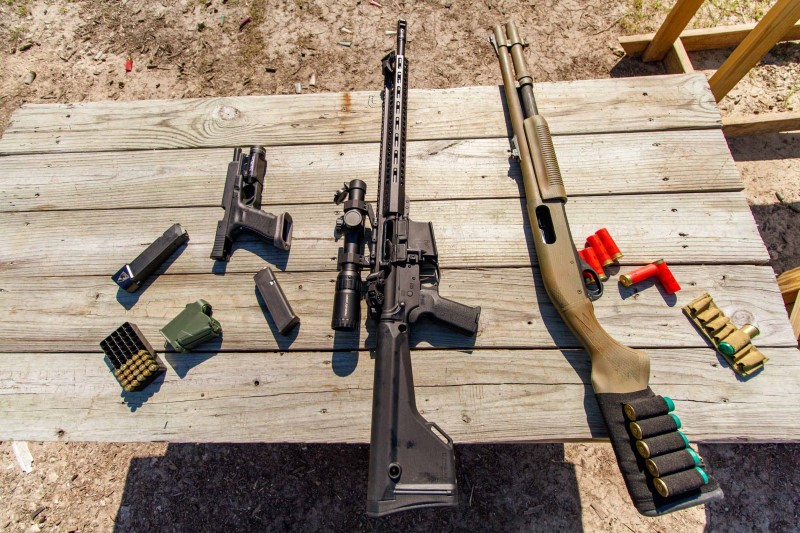
Understanding the impacts of the different needs of a three-gun shooter on overall success in 3-gun
Three-gun competition shooting is exciting, and can help you feel accomplished, regardless of where you place. But who doesn’t want to be in the winner’s circle? The best pistol for 3-gun is the one you shoot confidently and calmly with (specific models are listed later, in more depth). Of course, hardware can have a big impact on certain shooters in this type of competition.
Like building the ultimate AR-15 (a popular consideration for the 3-gun rifle component), where hardware can be king, a 9mm handgun built for 3-gun is hardware specific, but for a different reason.
And this is the crux of the argument for three-gun hardware – the hardware only matters in the sense that you can gain seconds, gain accuracy and gain confidence. It’s about real-world improvement, not potential for improvement.
So, hardware on the pistol side is all about the shooter’s comfort, control, and confidence, instead of being about accuracy potential brought on by components and gunsmithing.
Below you’re going to see our thoughts on the Glock 17/19, the FN 509, the CZ models, 1911’s and even some specialty factory guns like the Sig X-5. There are plenty of amazing 3-gun pistols to choose from. See our criteria outlines and our favorites as you read on.
We’re going to talk about the best 3-gun pistols specifically by make and model, and the reality of the pistol selection for most high-ranking shooters may surprise you.
Three-gun is a cumulative result competition
Three-gun competitions aren’t just about hardware. Any shooter that makes the mistake of thinking they will walk into most competitions, even locally, and overwhelm the field of competitors with fancy hardware alone, is in for a rude awakening. The idea of 3-gun is that it requires balance, nuance, gamesmanship and experience.
Hardware is essentially the thing that allows good shooters to push higher up in the rankings, not the be-all-end-all for scoring well in 3-gun.
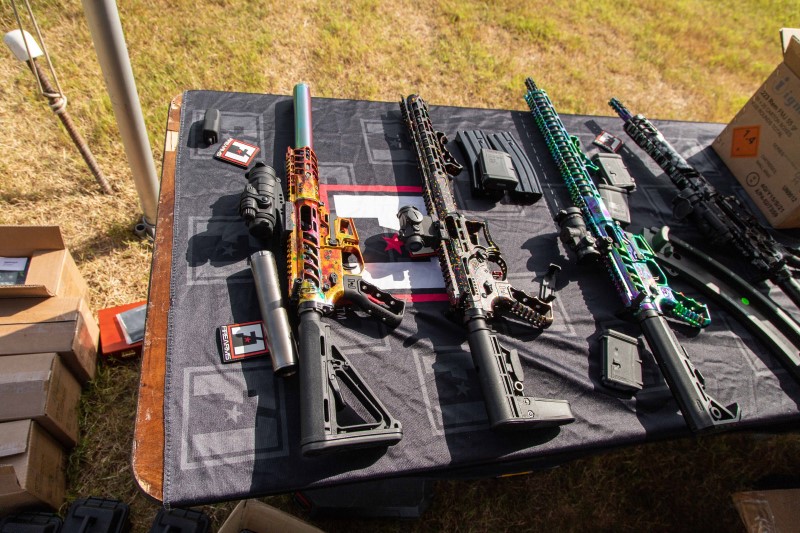
All that said, in this type of competition, hardware can be an important variable. This is especially true if your hardware inspires confidence, and you have enough time behind the gun that you can shoot in a variety of conditions and in real-time scenarios.
Three-gun competitions require adeptness on all three platforms, and many people find that because of the courses, pistols can be the hardest to excel in. That is generally because the obstacles are harder, there is a distinct lack of optical enhancers in “Factory” and “Practical” type matches, and the course designers usually know that Pistol runs can have more variability than rifle and shotgun do.
Pistol courses are generally the type that keep you on your toes, and organizers want to throw off the field of participants to ensure that no one shooter can game the system.
A single stage isn’t going to be able to overcome poor performance on other stages
This isn’t a knock on anyone, but oftentimes in 3-gun competitions, especially in local non-regional type competitions, there are shooters that have the big-fish, small-pond mentality. They train to the competition in that area and excel over all the other competitors as a result.
They know that the combined totals are what’s most important, and they are solid throughout with standout performances in 1-2 stages. Usually this is more than enough for a top finishing place.
So, while this is an article about choosing a 3-gun pistol, remember, you’ll need to perform well across the spectrum to compete at the top of the tables.
An early overview of the types of pistols used for 3-gun and why they make sense
You have a few different obvious choices with 3-gun pistols.
Factory is the first option. Basically, the best gun you shoot with in a bone-stock configuration. You see tons of Glock 17’s, M&P 9mm’s, and Springfield XDs, and of course a bunch of high end 1911 builds. The funny thing, though, these are the same guns you see in unlimited class competitions too. Just highly tricked out.
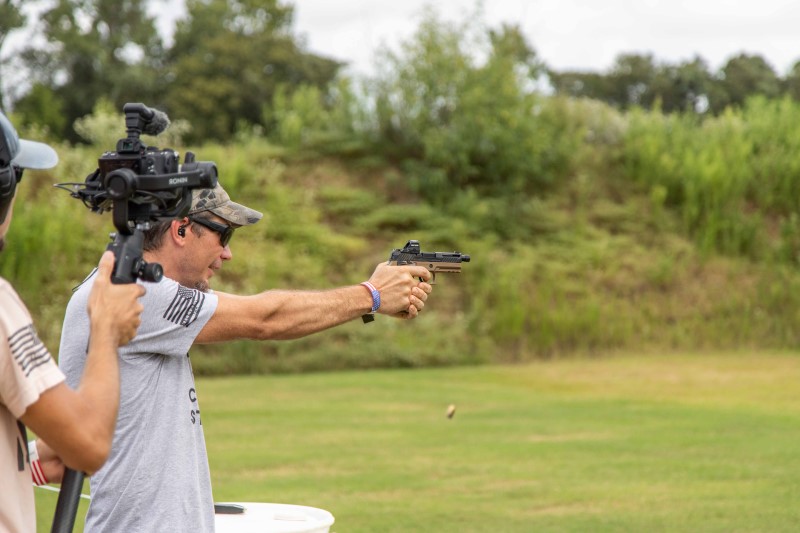
You’ve also got the factory guns that have improvements built into them at factories like the FN 509 or the CZ specialty guns. These guns offer a lot for the money when it comes to 3-gun, so long as they fit the rules criteria.
Now, as a word of caution – There is a push for standardization of event regulations across the board, but as the 3-gun competition scene explodes into the mainstream, it’s still not the reality. What is one competition’s “Practical” may be more akin to “Unlimited” in another competition, so your mileage may vary depending on the organization and the locale.
Factory, Practical or Unlimited
Different organizations call the types of competition considerations and entry rules different things. For practical considerations, the name “Factory” denotes a stock, limited set of rules when it comes to equipment that can be used.
“Practical” denotes mainstream/common modifications without score-skewing mods (like magnified optics) for rifle and shotgun, but generally pistols aren’t included in the modification rules for Practical, except that internal modifications are allowable.
“Unlimited” has basically no rules for pistols, except the 170mm magazine length stipulation.
Are you competing on the national stage or just getting started with local competitions?
Remember, that most of the guys shooting at the national qualification level are shooting factory guns with an unlimited stock of ammunition provided by said factory sponsor. It’s not going to be the level you are generally competing at when you first get into 3-gun.
They have highly specialized, premium equipment and many of them do this as a profession. That is: they shoot every day and get paid by sponsors to do so. It’s hard to compete with them.
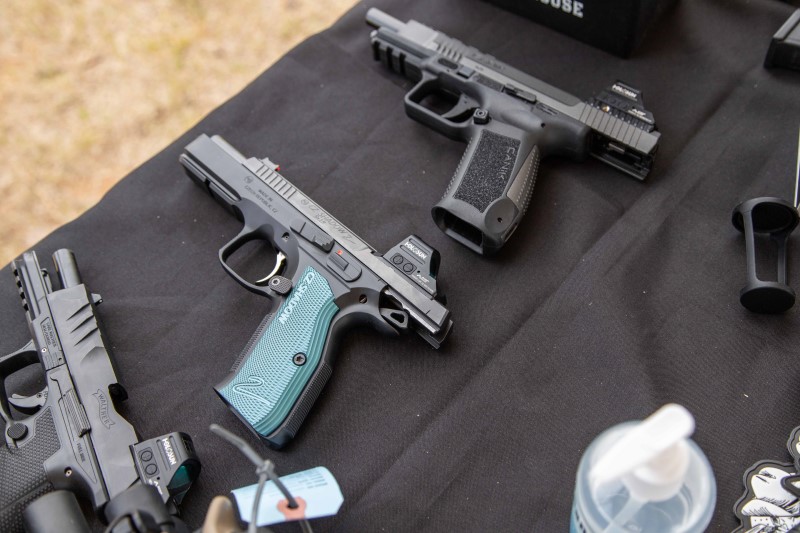
But in the local arenas for 3-gun, it’s entirely possible to leverage great shooting experience with a proper 3-gun pistol build to help equalize the field and make a legitimate run for the top of the table.
And if it wasn’t clear yet, Pistol in the 3-gun competitions is where the most ground can be made up through practice and experience, and confidence with the pistol. It’s the best place for making up ground because there are few equalizers outside of real-time accuracy and reaction time, and that comes mostly through practice, not hardware.
Which pistols do you shoot accurately and confidently with?
All the above-mentioned factory pistols have ergonomics advantages for some shooters, from palm swells that come in the polymer body pistol cases, to the beavertail on the 1911 combined with a short, crisp straight back trigger slide, etc.
The point is: you’re going to favor one over the other. Some shooters like generic ergonomics because they shoot well with the straightforward fitment.
Other shooters need to customize for grip control, dial back the loads or buy recoil controlled rounds to shoot optimally with certain platforms. All of these can be huge differentiators in 3-gun, so long as the competition rules allow it.
Remember, standardization isn’t quite across the board yet. And that means you can tailor your style of shooting to win competitions in more than just a hardware variable.
How modifications can help you in a 3-gun competition
Modifications matter, no doubt. Some of the best have to do with increasing capacity (remember that 170mm mag length rule for pistols) and making recoil control paramount. So internal items like heavy recoil rods, tuned spring kits and better trigger/sear combinations make a lot of sense.
Having a gun with excellent, easily acquired iron sights is a must. Using factory sights is almost always a non-starter (at least for budget builds). Anything that improves your consistency from holster through shot string, is going to be massive.
Think: grip tape, well-fit extended controls and comfortable, repeatable high hand holds, etc.
The rest of this article will talk about specific guns that make the most sense for 3-gun, because while all the above is important groundwork, and practice, experience and comfort are the easiest ways to make exponential gains, this is a gun article.
About the best 3-gun options. After all, this is what you came here for.
3-gun pistols you might consider as you compete in competitions
There are four tiers of guns that should generally fall into your consideration for 3-gun pistols. Many of the guns within each set of parameters have very common considerations.
- Factory polymer pistols with popular feature enhancements
- 1911’s that are highly customized
- Gunsmith options for factory guns
- Ergonomics that are different from peers
The Factory Polymers
Factory guns include the holy trinity of polymer guns, and the widest variety of 3-gun shooters opt for these, if for nothing else, then the price point allows for easy customization and more ammunition at the onset. Glocks, Springfields and S&Ws in polymer framed 9mm’s are most common.
You can generally lump these together, because each gun has its fans, and because 9mm has the widest availability of loads with the most potential for recoil control. The guns are lightweight, with high capacity, and magazines and ammunition are inexpensive relative to peers as well.
If 4 out of 5 guns you see in a 3-gun pistol stage are not from these makes and models, this author would be surprised.
Our five choices in factory guns:
Glock 17/19
The Glock is the original mainstream poly-framed pistol, with the 17 being a smart choice for those with larger hands; and the 19 being virtually identical from a competition perspective except utilizing slightly smaller dimensions.
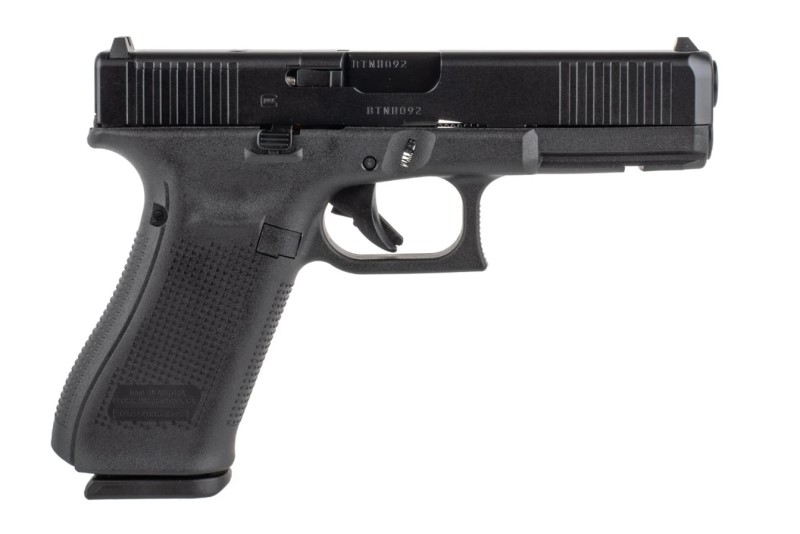
The benefits of the Glock 17/19 for competition is that many internal and external modifications exist for the platform; it is exceptionally easy to modify and do armorer work on the guns and they are ubiquitous when it comes to the “everybody” ergonomics.
They feature lightweight guns, easy to control recoil, that the polymer frame helps to soak up, and high-capacity magazines.
The drawbacks – factory sights are anemic and fragile; the gun may be too blocky for some users to get excited about ergonomics, and the inherent accuracy is not as good as more finely tuned pistols, though you can overcome that with consistent shooting, easily.
S&W M&P
A slightly more modification capable gun from factory (it comes with multiple grip -panel inserts from factory) and slightly more fine-tuned ergonomics, the S&W M&P series is the closest direct competitor to the Glock polymer handguns.

While the trigger on the S&W pistols is not as good from the factory as the Glock, it’s a different kind of trigger, and with the right work and parts can be made to be substantially better and more customized than the Glock trigger.
They are very similar striker-fired guns that have great fast fire capabilities and are generally top choices for factory tier 3-gun.
Ergonomics are very decent for a factory gun out of the box with some customization capabilities, and the capacity is high, allowing you more ammo.
The drawbacks are again, the sights aren’t amazing, the trigger will need work. But the gun is generally quite affordable, and the aftermarket part and customization options are robust.
Springfield XD
Another pretty similar gun, the Springfield XD adds a grip safety which is foolproof, and a 1911 style rear safety to the mix, while offering a slightly higher handhold from factory with a slightly lower bore axis on some variants.
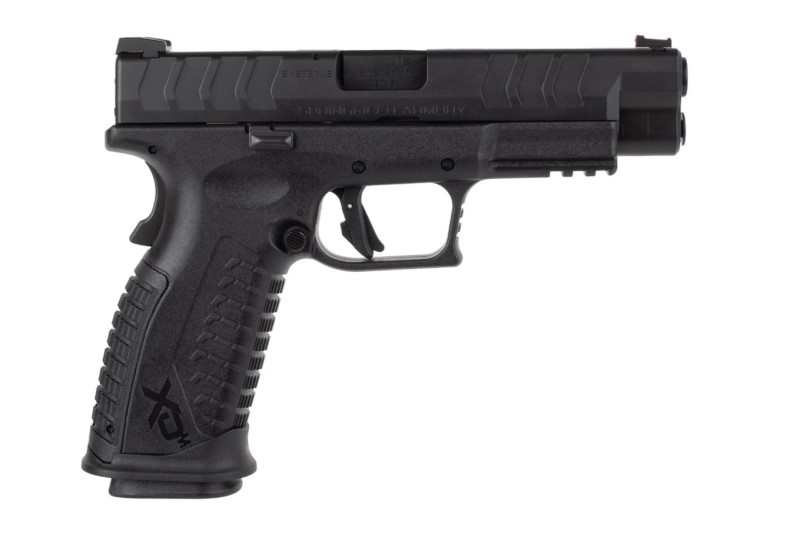
The benefit here is that the gun generally allows for a larger sight plane and a longer barrel, which can have some practical accuracy value in competition shooting if you can handle the minimal added weight.
Surprisingly, the ergonomics are very similar to the 1911, and while it is a bit blocky for smaller hands, the overall user comfort is high, even with the grip safety and slightly deeper handhold.
Sights will likely need to be replaced out of the box, and the gun can seem a bit austere at first, so there may be some getting used to the control set and safeties, but overall, it’s a solid 3-gun pistol option.
FN 509 Tactical
Loaded out of the factory, this pistol is significantly option-heavy and it’s also a very nicely tuned firearm for the money. It’s got threads for a suppressor which won’t be of value in a 3-gun. But it does help if you have a tax stamp and a “can”, for other reasons.
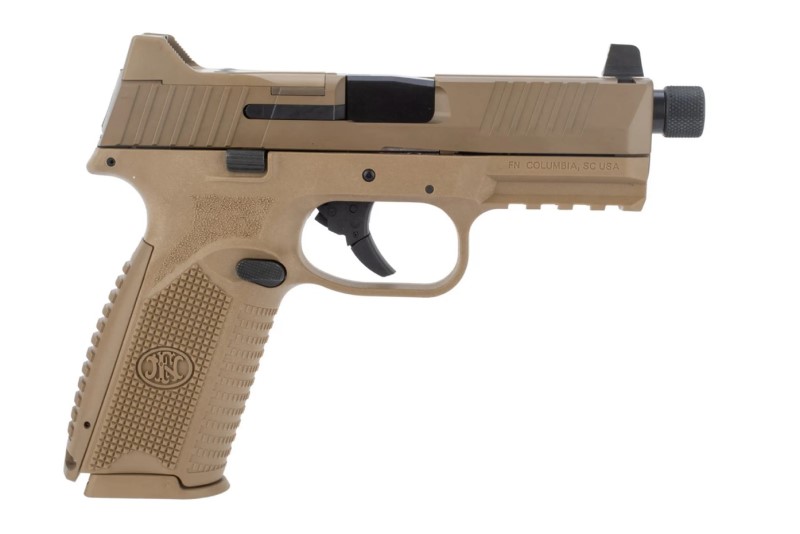
It also has very smooth ergonomics, albeit slightly thick in the grip width areas. Additionally, high-capacity magazines boast bumper pads on the bottom to help with mag dumps.
The inconspicuous tactical looks may get the gun flagged, or pegged into the practical class in most locales, so ask ahead if you intend to shoot an FN 509 at your local competition.
The trigger could use a bit of work, and the factory installed sights are made to accommodate a suppressor, which means you either need to practice heavily to stay on target or swap them for some normal sights if 3-gun is all you intend to do with the pistol.
HK P30
Offering the best ergonomics from the polymer gun group, the HK P30 is also a workhorse that has seen several torture texts past 1 million rounds without major malfunctions. Truth be told, if you are an HK fan, you wouldn’t want to shoot anything less than this in competition.
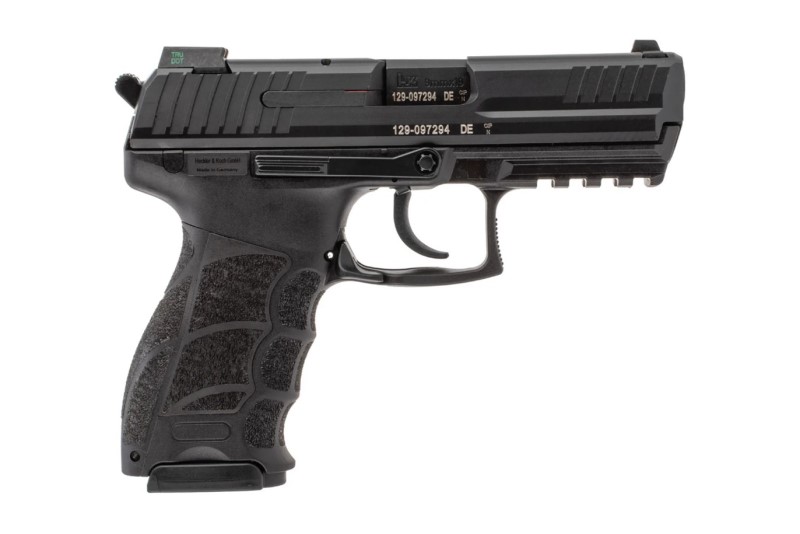
The finger grooves help tremendously to improve recoil, control, and consistent on-target shots.
The factory sights are generally decent, and the mag capacity is comparable to the other polymer guns.
We aren’t going to go into the merits of these factory polymer guns too deeply. There are broad articles about each of these guns available to the reader, and those articles can do a better job of talking about the nuances if you are not already intimately familiar with them. The point is this: these are factory stock pistols that are ready for 3-gun out of the box.
Why 5 options? Because they fit different people in different ways, and everybody has their preferences. Each of these guns are so substantially similar (with the mild exception of the FN 509 Tactical) that any shooter can compete with a sub $1k pistol if they put their mind to it.
Having 5 substantially similar options just makes sense. They are essentially the same format from a 3-gun perspective, just up to your personal preferences on feel.
There are reasons we left the Sig polymer guns off the list, but mostly because their dedicated polymer options can’t compete 1 to 1 with the others listed as far as features and capabilities. There is also a Sig included on this list in a different category.
1911 Gunsmith Delights
1911’s that have been highly customized are the next grouping, and this is usually the unlimited class competitions, because anything goes and a $5k pistol has some sway if it makes you more confident and faster.
This is going to suffer for capacity if it relies on the standard 1911 frame, but most do not. These guns will often utilize a 2011 frame, or other high-capacity frame option.
The trigger and overall consistency with a high hand hold can be a game changer for certain shooters. The 1911 will always be a common choice in unlimited classes.
Our top “mainstream” customized 1911 choices:
STI Edge 9mm
A classic offering from STI, one of the pioneers (aside from Para Ordnance) for the widebody 1911. Everything about the custom factory gun made by STI is geared towards unlimited class 3-gun or similar competition shoots.
There is high capacity, heavy grip control, exceptional ergonomics, even despite the thicker grip, and finely-tuned component parts.
Nighthawk Custom Doublestack Upgrade (for a 1911 custom from their shop)
Nighthawk Custom fits this list to a “Tee”, but you could easily substitute a Wilson Combat or Les Baer, or Ed Brown, or other custom 1911 maker here too.
The Nighthawk is indicative of what you can expect to get with a premium 1911 widebody out of a custom shop. They have impeccable build quality; the 1911 lends itself well to heavy modifications, and the gun is reasonably priced for a fully hand-built gun (it may not be affordable, but it is bespoke).
The high hand hold, perfect-fit hammer and sear and trigger grouping and the barrel that is rock solid and capable of 1.5” groups or so at 25+ yards means you have a powerhouse option in the Nighthawk.
Both guns (and really, any 1911 in 3-gun) should only be considered for use in Unlimited class (or Practical if you can manage the modifications properly). If you are so inclined to use a 1911 single stack because you shoot uncommonly well with it, you should be practicing your magazine changes and working on maximizing target hits.
Gunsmith options for factory guns
These are usually custom shop firearms that use one-off frameworks based on mainstream factory models that boast enhanced ergonomics and better styling (most of the time). You get very high-quality guns that look somewhat familiar but are highly accurized with the right modifications straight out of the factory with a warranty.
Our top two choices for factory specialty guns:
The Sig X-5
The Sig X-5 is the F22 raptor of the competition scene, with the slick military vibes and the clean outside interface as well as the ability to raise serotonin levels in the user’s bloodstream because of the stunning good looks and exceptional ergonomics.
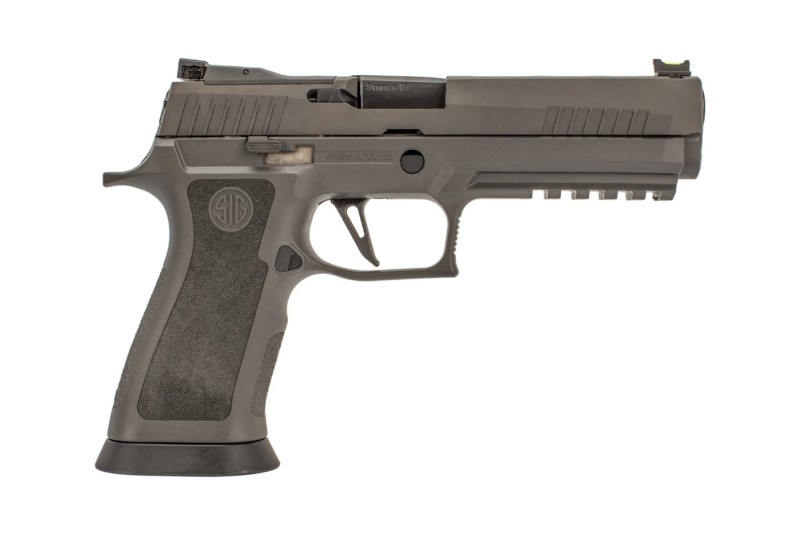
It’s gorgeous, well thought out and has a plethora of hand fit options that showcase Sig’s commitment to its competition offerings. It is not an inexpensive gun, but you know the second you rack the slide or pull the trigger that you made a very good decision to own one.
The slickness is the focal point, and it is slick. It’s a fine machine that’s running on all cylinders all the time. And while it’s super classy, it’s also a gun that was purpose-built to shoot, not just to look good.
Nighthawk Custom Browning Hi-Power
Another beauty from Nighthawk – the Browning custom is more jewelry than it is a competition gun if you just glance at it, but the practical modifications cannot be understated from a real-world perspective. The point is that the Hi-Power is exceptionally good at accomplishing tasks in the tactical gun arena.
Both these pistols are grail guns for a lot of people, and they seem impractical on the surface, but here is the argument: Both are exceptionally comfortable to shoot, proven platforms that offer exceptional recoil control and have the best factory-tailored options.
And guns like these, as expensive and hard to source as they can be, are meant to be shot. They are meant to be carried if you prioritize creature comforts and shooter-centric feature sets.
If you are serious about 3-gun, personal defense, or shooting the best available firearms from a purely enjoyment perspective, this is a class of pistols you should consider.
And there is the bonus of looking like the crazy guy, who is shooting a $4k+ pistol, that wasn’t built specifically for competition, but is so competition-focused that people just stand there slack-jawed at your audacity. That can be a great equalizer too. If you shoot these pistols well.
Another bonus: these two guns are among the best-looking pistols on the market currently, but that may just be this author’s opinion. For some clarity too, the new variants of the Browning Hi-Power and clones from Springfield Armory and Fabrique Nationale could easily be on this list as factory options now that they are slated for release.
The “Ergonomics are king” guns
These pistols prioritize one-off styles to push a specific concept. They can be had in factory specific models, or in highly customized frame modifications that include multiple types of checkering or stippling or other modifications like finger grooves, trigger notches, etc.
Our choices for Ergonomics-centric wildcard pistols:
CZ SP-01
You either love them or you hate them from the first moment you grip them – but you cannot undervalue the low bore axis, decent sights, all steel (certain variants) construction, and the trigger that, while different, can be magical. The magazine capacity and good looks are a bonus, but they can help sway the decision too.
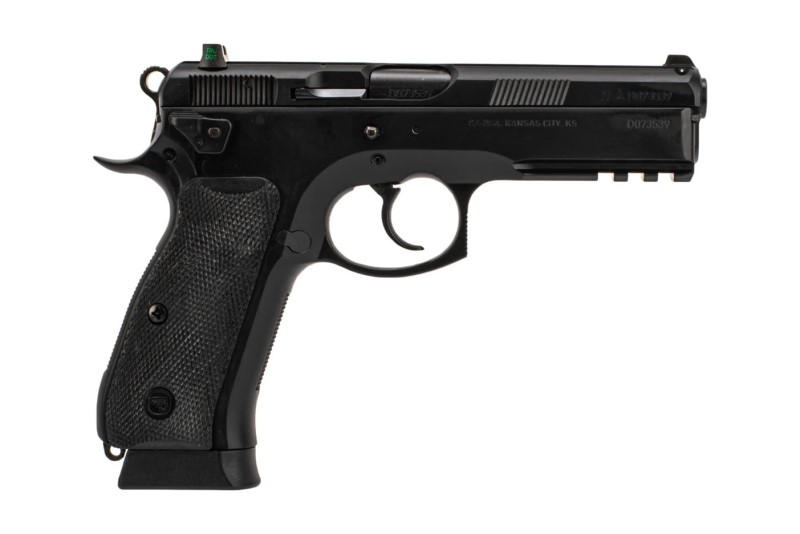
If you pick one up and it feels like an extension of your hand, you will likely enjoy shooting it very much. No slide bite, but incredibly high handhold and deep seating in the hand, and a very intuitive posture for a competition gun.
Heavy enough to soak up recoil, but not so heavy as to fatigue you easily. This is a winning pistol – if you like CZ’s proprietary ergonomics.
Glock 19 “John Wick” Combat Master by Taran Tactical
This is a great gun, built on years of experience in 3-gun and in real-world shooting. Sure, it’s also a Hollywood-centric marketing tool. Taran has been training three-gun pros for ages and has real experience in winning things.
This gun prioritizes everything you need in a practical gun, without the frivolity that usually comes when you give a gunsmith or armorer a laser engraver and a CNC mill.
Taran Tactical is able to sell $1600+ Glocks because of the added value and added confidence and accuracy that the practical modifications offer. This gun is a no-brainer for mid-tier competitors that want to shoot a polymer framed firearm, specifically a Glock, and want to have the same creature comforts of a gun that probably should have a price tag of $3500+.
The best features are the grip-focused changes and the work on the internals.
While the two guns here could also have been placed in other “categories” of guns we listed above, they fit here too. And there are others we prioritized into certain groups that could also be listed as having exceptional ergonomics, namely the Sig X-5, but these two are very good for a wide variety of shooters, ergonomically speaking.
Some final notes about common accuracy and handling considerations
The following line items are incredibly important when choosing a three-gun pistol option:
- Comfort and customizability of the platform
- Things like low bore axis, proper sights, and high grips
- Specialty gunsmithing or high-level factory standards for barrel fitment or slide to frame tightness
- Ammunition capacity in the magazine
Every single one of these things can have unbelievable, positive impacts on your 3-gun score. In fact, each of these considerations can have an impact in any class, generally (internal modifications are usually not controlled, unless a gun is unsafe).
A special note: You may be able to make a case for limited capacity pistols, like a stock 1911 in states like California and New Jersey that limit capacity in magazines to 10 or less.
So, as we tried to explain throughout the article, gun-picking is important, but gun picking for your unique shooting style, and enhancement of your consistency and control during real-world scenarios is what offers the biggest chance for you to score well in 3-gun, as the pistol stages in the competition are the place where most of the ground can be made up.
As you move along your 3-gun journey, your tastes may change, your needs may change, your desire for flashiness may change. What will never change, is the fact that the best 3-gun pistol is always the one you personally shoot most confidently, accurately, and quickly with.
Setting yourself up based on those criteria is the most solid foundation you can have for success in a 3-gun competition.
[Note: This was a guest post.]
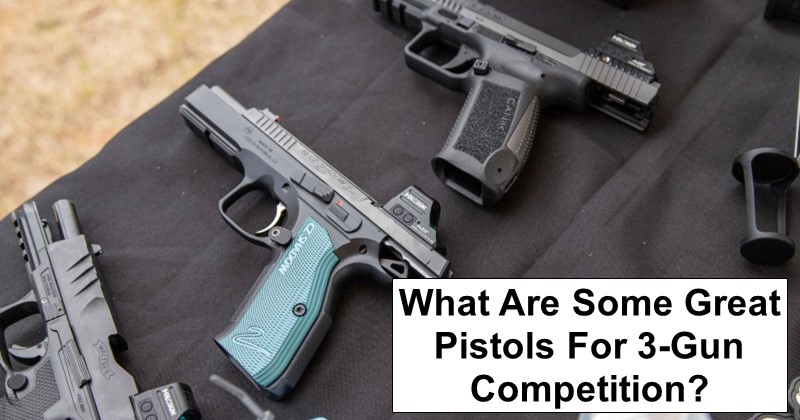
Leave a Reply